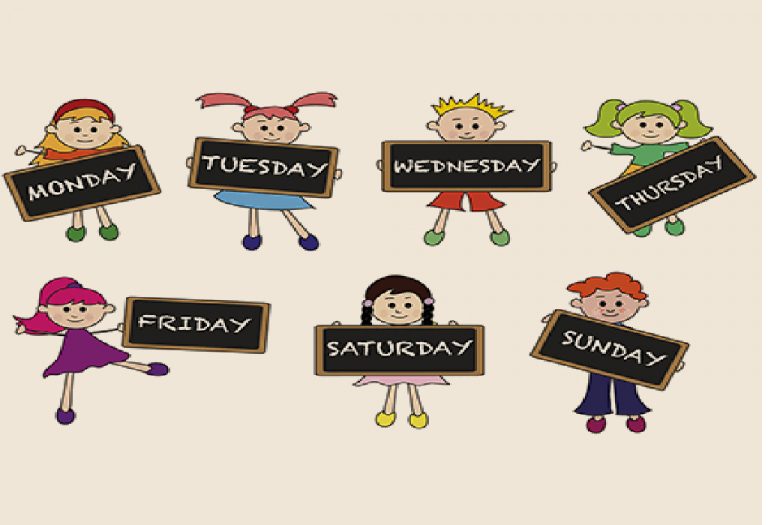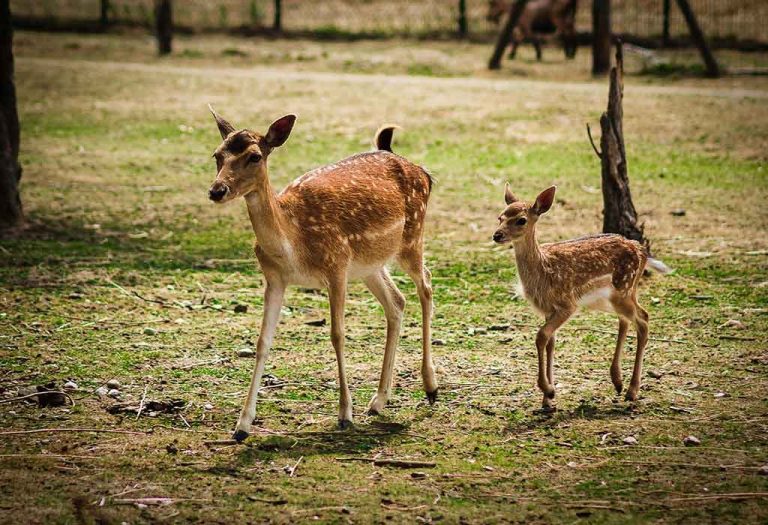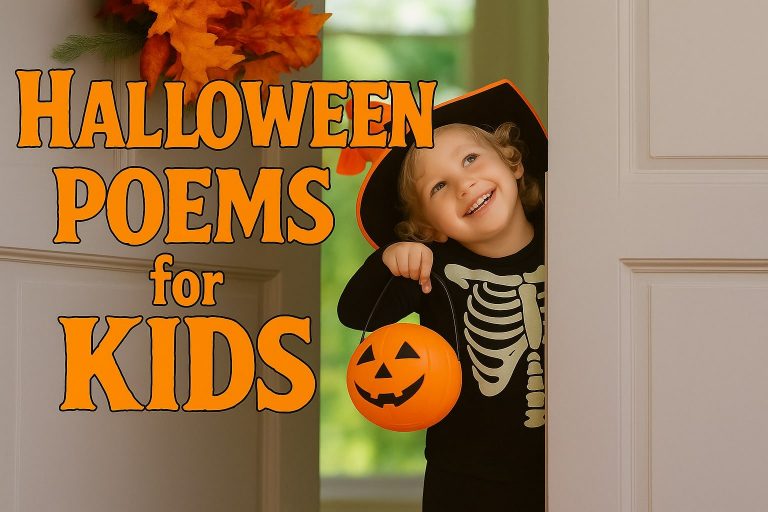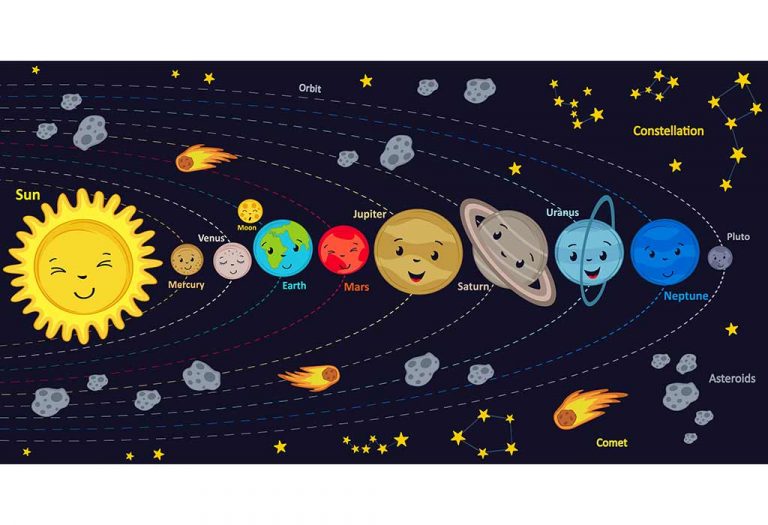Essay On Rainbow – 10 Lines, Short and Long Essay
Essay writing is a profound way for learners to express their understanding and perspectives on various subjects. It hones their critical thinking, enhances linguistic skills, and fosters creativity. The topic in focus today is the rainbow essay in English. Delving into this subject presents the beauty and science behind rainbows and exemplifies how nature can be both simple and complex. The essay on rainbow for children and students is specifically tailored to elucidate this captivating phenomenon in a comprehensive yet easily graspable manner for young minds. As children embark on this enlightening journey, they will appreciate the magnificence of a rainbow, feel the joy of learning, and recognise the power and benefits of well-articulated expression.
Key Points to Remember When Writing Essay on Rainbow
Crafting an insightful and engaging essay on any topic requires careful consideration of its various facets. When students, especially those in the early stages of their academic journey, decide to write a rainbow essay, there are specific aspects they should bear in mind. These elements add depth to their writing and make their essay resonate more with the readers. Here are some crucial points for writing rainbow essay for classes 1, 2, and 3:
- Understanding the Basics: Before delving deep, ensure you know the fundamental principles behind the formation of a rainbow. This foundational knowledge will act as the bedrock for your essay.
- Cultural and Mythological References: Rainbows have been significant in various cultures worldwide. Mentioning some of these can make the essay more interesting and informative.
- Simple Language: Use straightforward and clear language for a rainbow essay. Young readers or listeners must grasp the concept effortlessly.
- Include Personal Observations: Have you ever witnessed a rainbow? Share your personal experience or feelings about it. This personal touch can make your essay more relatable and vivid.
- Visual Aids: If possible, include a drawing or illustration of a rainbow. Visuals can reinforce understanding and make the essay more engaging.
- Conclude with a Takeaway: End the essay with a thought-provoking statement or a fact about rainbows that readers can ponder, ensuring your essay leaves a lasting impression.
What Is Rainbow?
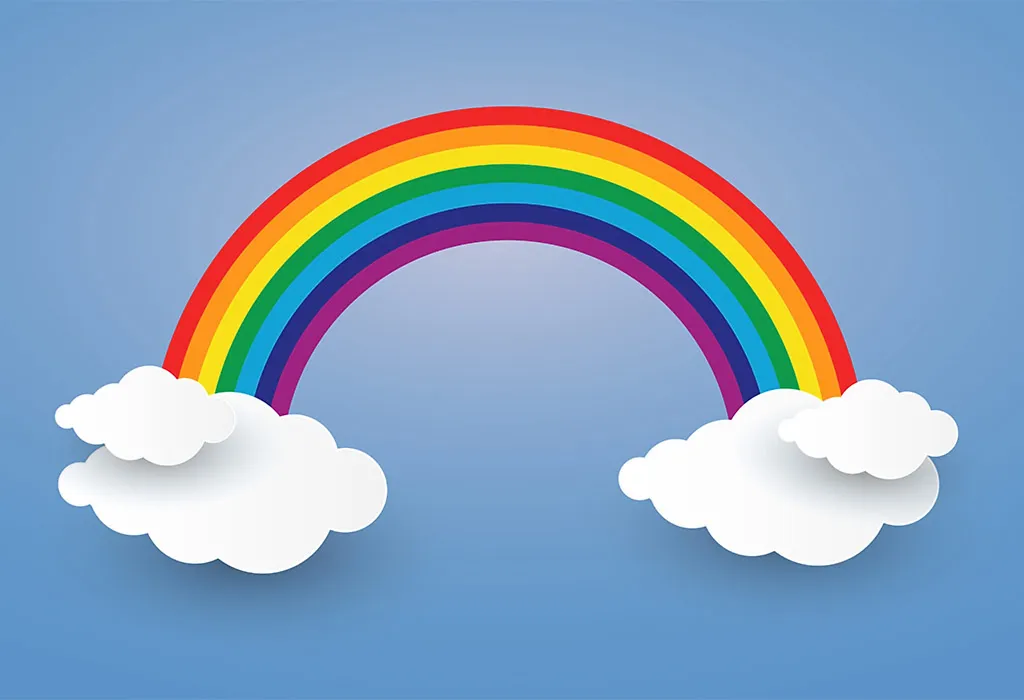
At its core, a rainbow is a breathtaking visual spectacle, a semicircular spectrum of colours that one can sometimes see in the sky when sunlight interacts with raindrops. But there’s much more to this natural wonder than what meets the eye. Let’s dive deeper into understanding the essence of a rainbow.
A rainbow results from a series of physical processes: refraction (bending of light), reflection, and dispersion (spreading out) of light within water droplets in the atmosphere (1). This interaction between light and droplets produces a spectrum of colours in the sky. The sequence of colours in a typical rainbow is violet, indigo, blue, green, yellow, orange, and red, often remembered by the acronym VIBGYOR.
5 Lines on Rainbow
Introducing young minds to the marvels of nature can be a delightful experience. The rainbow, a symphony of colours in the sky, is one of those phenomena that never fails to capture children’s imagination. While detailed essays provide an in-depth understanding, just a few lines can sometimes spark curiosity and wonder in young hearts. Specially designed for young learners, here are 5 lines about rainbows suitable for kindergarten students and those in the early years of school.
- A rainbow is a beautiful curve of colours in the sky.
- It appears when sunlight shines through raindrops.
- Rainbows have seven colours: red, orange, yellow, green, blue, indigo, and violet.
- We often see a rainbow after a rain shower when the sun comes out.
- It looks like a colourful bridge in the sky.
These few lines on Rainbow for Kindergarten offer a concise yet enchanting glimpse into the world of rainbows, ensuring young learners remain captivated and inspired to explore more.
10 Lines on Rainbow
The beauty of nature is vast and varied, with the rainbow standing out as one of its most magical displays. Often, children are left gazing skywards, captivated by this burst of colours following a drizzle. An essay for kids can provide a deeper understanding while nurturing their natural curiosity. While comprehensive essays elucidate the topic further, a few lines can sometimes vividly paint the picture and convey the essential details. Here’s an essay on rainbow for class 1 and 2:
- A rainbow is a mesmerising display of colours in the sky.
- It forms when sunlight interacts with raindrops in the atmosphere.
- The colours of a rainbow are red, orange, yellow, green, blue, indigo, and violet.
- The scientific processes behind its formation are refraction, reflection, and dispersion of light.
- Rainbows are often seen when the sun shines after a brief spell of rain.
- A double rainbow can sometimes be spotted, with the outer one having colours in reverse.
- Sir Isaac Newton was the scientist who first identified the seven colours of the rainbow.
- Rainbows have inspired numerous myths, legends, and stories across cultures.
- Some people believe that a pot of gold can be found at the end of a rainbow.
- Rainbows symbolise hope, beauty, and the wonders of nature.
A Paragraph on Rainbow
Writing a paragraph about rainbows is like opening the door to a magical world of colours and wonder. We can describe how rainbows appear after rain and are made of different colours. We can also talk about stories about rainbows, like finding a pot of gold at the end. Writing this paragraph is our chance to share the beauty of rainbows with others!
Rainbows are a mesmerising meteorological phenomenon that often captivates observers with their brilliant hues stretching across the sky. They result from a delicate dance between sunlight and water droplets in the air. When sunlight passes through these droplets, it refracts or bends and then reflects off the inner surface of the raindrop. As the light exits the droplet, it refracts again at a different angle. This series of refraction and reflection disperses the light into its various colours, presenting us with the stunning spectrum visible as a rainbow, encompassing the familiar sequence of red, orange, yellow, green, blue, indigo, and violet.
Rainbows in Culture and Mythology
Beyond their scientific explanation, rainbows hold profound symbolic meaning in various cultures and mythologies worldwide. For many, they symbolise hope and promise, often representing a bridge between the earthly realm and the divine. In numerous legends and myths, the appearance of a rainbow has been interpreted as a sign of blessings, peace, or a forthcoming change. Rainbows’ beauty and ethereal nature have given them a revered place in literature, art, and popular culture, constantly reminding them of the magic in our natural world.
Short Essay on Rainbow
Rainbows, with their fleeting beauty and breathtaking array of colours, have always held a special place in the hearts of many. Writing a short essay about rainbows is like painting a picture with words. This essay aims to both educate and inspire young writers.
Rainbows usually appear after rain when the sun comes out, creating a bright, colourful arc against the sky. This mesmerising phenomenon occurs due to the interaction of sunlight with water droplets in the atmosphere, leading to reflection, refraction, and dispersion processes. As sunlight passes through these droplets, it bends and separates into a spectrum of colours visible to the naked eye: red, orange, yellow, green, blue, indigo, and violet. The exact appearance of a rainbow can vary, depending on factors such as the raindrops’ size and the sunlight’s angle, making each rainbow a unique masterpiece.
Beyond the science of its creation, rainbows have been significant in numerous cultures and religions. They are seen as symbols of hope, promises, and new beginnings. After a storm or a bout of rain, a rainbow serves as a gentle reminder that even after the darkest times, beauty and light are waiting to emerge. Literature and art, too, have celebrated this natural phenomenon, using it as a metaphor for hope, diversity, and unity.
Long Essay on Rainbow
Understanding the rainbow’s intricacies offers a balance between natural wonders and scientific insights for young learners. This long essay for class 3 and above classes dives deep into the phenomenon of rainbows, ensuring a comprehensive understanding for students, enriching their knowledge, and nurturing their enthusiasm for writing rainbow essays.
The rainbow, a multi-coloured arc in the sky, has intrigued and inspired generations of observers. Its beauty, blended with the science behind its formation, makes it a captivating subject for academic exploration.
Rainbow Types
While the traditional arc-shaped rainbow is the most commonly recognised, there are several types of rainbows based on their formation and appearance:
- Primary Rainbow: The brightest and most vivid rainbow type displays the VIBGYOR colour spectrum (3).
- Secondary Rainbow: Formed outside the primary arc, it is fainter with colours reversed.
- Double Rainbow: A phenomenon where primary and secondary rainbows appear simultaneously.
- Supernumerary Rainbows: Faint rainbows appear inside the primary rainbow with pastel-like bands.
- Twinned Rainbow: A rare occurrence where two separate arcs originate from the same base.
- Monochrome Rainbows: These rainbows appear as a single colour, often in conditions like fog, and lack the diverse spectrum of a traditional rainbow.
How Are Rainbows Formed?
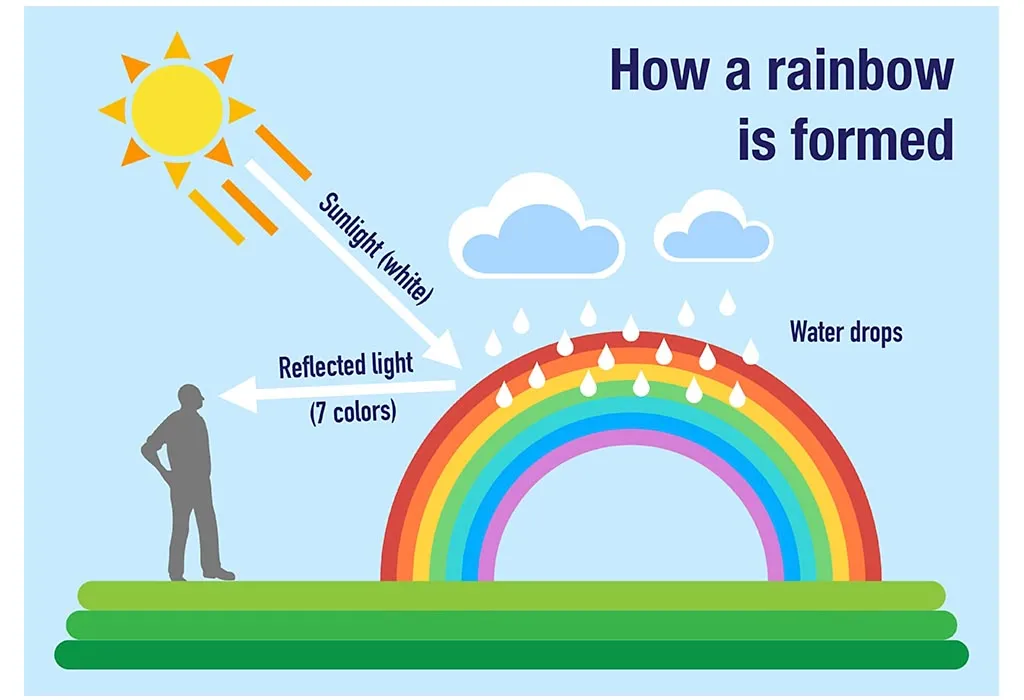
The formation of a rainbow is a blend of art and science, weaving together various physical processes. Here’s a step-by-step breakdown:
- Light Refraction: When sunlight enters a raindrop, it slows down, bending as it passes into this denser medium.
- Dispersion: Due to varying wavelengths, light further splits into constituent colours inside the droplet. This spreading out of light is called dispersion.
- Internal Reflection: The dispersed light reflects off the inner surface of the raindrop.
- Exit and Second Refraction: As the light exits the droplet, it refracts again, further separating the colours. This process makes the different colours visible to observers on the ground.
Significance of 7 Different Colours of Rainbow
Each hue in the rainbow’s spectrum holds particular significance, both scientifically and culturally:
- Red: The outermost colour of the rainbow, it signifies passion, love, and energy in various cultures.
- Orange: A blend of red and yellow, orange represents creativity, warmth, and enthusiasm.
- Yellow: Situated in the middle of the spectrum, it is often associated with joy, happiness, and the sun’s energy.
- Green: Bridging the warm and cool colours, green symbolises life, growth, and nature.
- Blue: Representing calm and serenity, blue often finds associations with the sky and sea.
- Indigo: This deeper shade of blue hints at the mysteries of the universe and the depth of human introspection.
- Violet: The innermost colour, violet, is often linked with royalty, luxury, and spirituality.
Amazing Facts About Rainbow for Children
The natural world is filled with wonders; among them, the rainbow is a standout spectacle. Its mesmerising bands of colours have been a source of fascination for both the young and old alike. But beyond its aesthetic allure, the rainbow is also a treasure trove of intriguing facts and mysteries. For the budding young minds eager to discover more, here’s a compilation of fantastic tidbits about this celestial marvel. Let’s dive into these fascinating facts that make the rainbow even more magical for children!
- Circular Rainbows: While we often see a semicircular arc, rainbows are full circles. It’s just that the ground obstructs the bottom half.
- No Two People See the Same Rainbow: It’s a personalised view! The rainbow you see depends on the raindrops reflecting and refracting the light to your eyes.
- Moonbows: Rainbows don’t just appear in daylight. Under the right conditions, moonlight can produce “moonbows”, albeit fainter and often colourless due to our eyes’ nighttime sensitivity.
- Red Is Always Outermost: In a primary rainbow, red is always on the outer edge, while violet sits on the innermost part.
- Rainbow Temperature: Cool fact: Rainbows can give a hint about the temperature. If the half-circle is high in the sky, it’s often nearing noon and warm; if it’s low, it might be morning or late afternoon, implying cooler temperatures.
- More than Seven Colours: Our eyes typically pick up seven colours in a rainbow, but there are countless shades in between, making the actual number much higher.
- Double Rainbows: Have you ever seen a fainter arc outside a primary rainbow? That’s a secondary rainbow, with its colours reversed (Violet to Red) (4).
- Alexander’s Dark Band: The area of the sky between a primary and secondary rainbow looks darker. This phenomenon is known as “Alexander’s Dark Band”(5).
- Rainbows Aren’t Just from Rain: While rain is the most common medium, rainbows can also be formed from other water sources, such as mist, spray, and fog.
- Rainbows in Mythology: Throughout history, different cultures have revered rainbows. Norse mythology saw it as a bridge between the gods and Earth, while Greek mythology considered it the path made by the messenger Iris between Earth and Heaven.
What Will Your Child Learn From Rainbow Essay?
The world of essays isn’t merely an avenue for children to improve their writing skills or to get good grades; it’s also a portal to knowledge, understanding, and broadened horizons. The act of writing or even reading an essay can be transformative. So, when your child delves into an essay about a natural wonder like the rainbow, what profound learnings can they derive from it? Let’s explore this.
- Science Meets Art: The rainbow is a marriage of scientific processes and nature’s artistry. Children will understand the intertwining of reflection, refraction, and dispersion, which makes a rainbow possible. This can nurture a deep-seated appreciation for how science is always at play around us.
- Cultural Connections: Rainbows have been part of mythologies, stories, and art across cultures and civilisations. This essay helps children see how different cultures perceive the same phenomenon, fostering an appreciation for global diversity.
- Language Skills: Crafting or reading a well-structured essay will inevitably sharpen a child’s linguistic abilities. They’ll learn to structure their thoughts, employ descriptive language, and use varied sentence constructs.
- Critical Thinking: Understanding the various types of rainbows, their formations, and the conditions that lead to their emergence prompts children to think critically. It trains them to analyse situations and outcomes.
- Aesthetic Appreciation: Beyond science and culture, children will learn to value the sheer beauty of the world around them. They’ll begin to see the wonder in everyday natural occurrences, nurturing a lifelong appreciation for the environment.
- Symbolism and Interpretation: Rainbows often symbolise hope, diversity, and new beginnings. Recognising these symbolisms helps children develop deeper interpretative skills, not just in nature but also in literature, art, and life scenarios.
- Holistic Knowledge: The essay won’t just be about light and droplets; it’s also about history, geography, weather patterns, and even human psychology. It provides a holistic view, showing children how interconnected knowledge domains are.
FAQ’s
1. When does the rainbow appear?
A rainbow typically appears when raindrops are in the air and sunlight shines from behind at a low angle. The sunlight gets refracted, or bent, as it enters a water droplet. The light reflects off the inside surface of the droplet, and as it exits, it turns again. This process can result in a spectrum of colours appearing in the sky (2). The most common time to see a rainbow is after a rain shower in the late afternoon or early morning when the sun is low in the sky.
2. What is a monochrome rainbow?
A monochrome rainbow, as the name suggests, is a rainbow that displays only a single colour. These rainbows typically arise under certain conditions, such as when the rain droplets are of a particular size. For example, a blue or green monochrome rainbow can be seen during a fine drizzle where the droplets are smaller. Fog bows appear in fog (comprising tiny water droplets), often white or blueish, and can be considered a monochrome rainbow. The colour of the monochrome rainbow largely depends on the droplets’ size and the incoming sunlight’s angle.
With their ethereal beauty and the science behind their formation, rainbows have been a constant source of intrigue and inspiration across ages and cultures. This essay’s journey, beginning with the fundamental definitions and advancing to complex phenomena and cultural interpretations, provides an understanding of this celestial marvel and showcases how intertwined nature, science, and culture can be. For children and students, essays like these don’t merely serve academic purposes; they instil a sense of wonder, curiosity, and a deep appreciation for the world around them. Whether you’re gazing at the sky after a rain shower or diving into the depths of essays like these, there’s always a rainbow of knowledge and beauty waiting to be discovered.
References/Resources:
1. Rainbow; National Geographic; https://education.nationalgeographic.org/resource/rainbow/
2. What Causes a Rainbow?; SciJinks; https://scijinks.gov/rainbow/
3. Rainbow; Britannica; https://kids.britannica.com/kids/article/rainbow/400160
4. What is a double rainbow?; Met Office; https://www.metoffice.gov.uk/weather/learn-about/weather/optical-effects/rainbows/double-rainbows
5. Alexander’s band; Institute of Physics; https://spark.iop.org/alexanders-band
Also Read:
Space Facts for Kids
Rainbow Songs for Children
Facts About Science for Kids
Facts About Light for Children
Was This Article Helpful?
Parenting is a huge responsibility, for you as a caregiver, but also for us as a parenting content platform. We understand that and take our responsibility of creating credible content seriously. FirstCry Parenting articles are written and published only after extensive research using factually sound references to deliver quality content that is accurate, validated by experts, and completely reliable. To understand how we go about creating content that is credible, read our editorial policy here.








